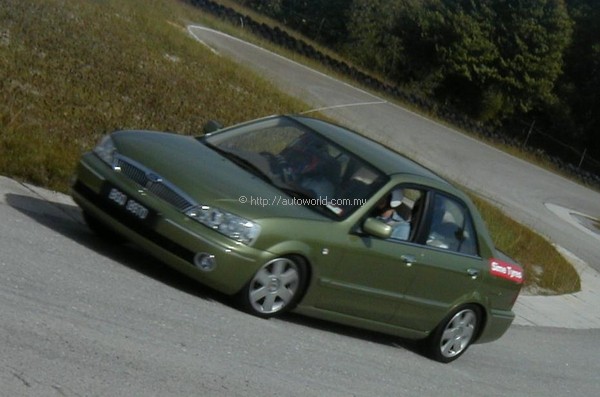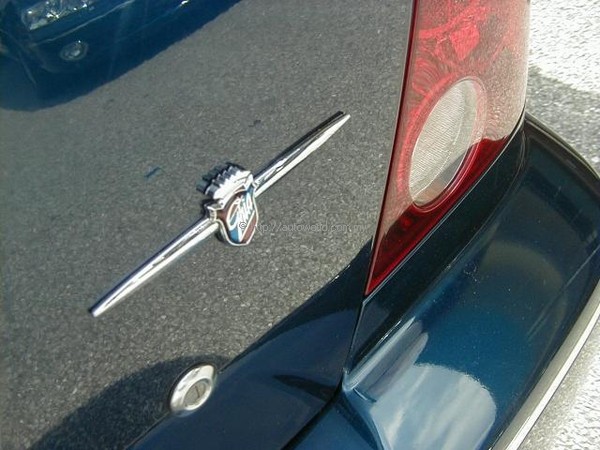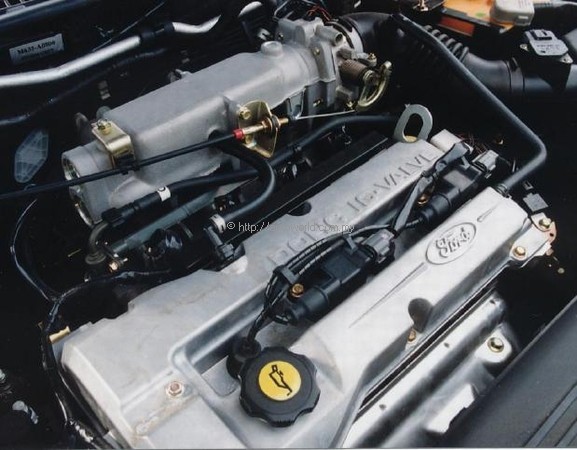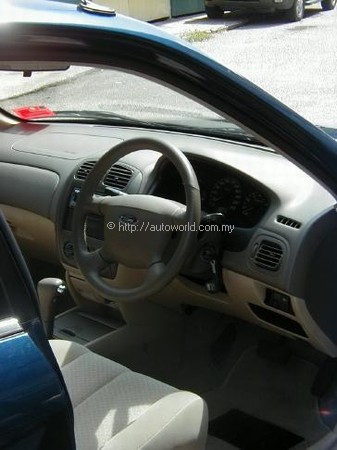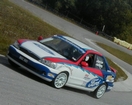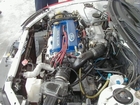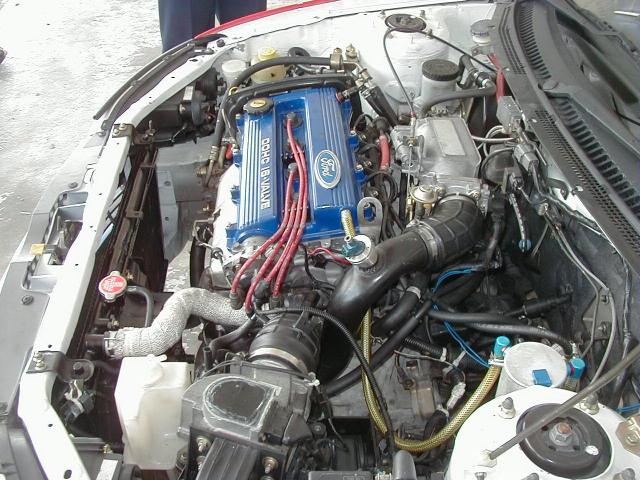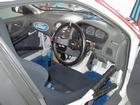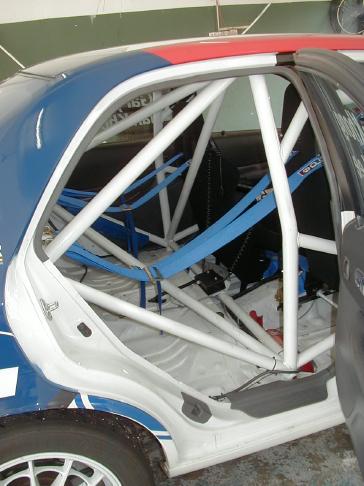Taking the Ford Lynx Ghia to the Limit
We have to admit it – testing a car on a racing circuit is not something that we can do all the time, partly because of the cost and partly because the cars are not always available when we can have such sessions. However, once in a while, some of the companies that are more understanding of our job will arrange a ‘track day’ where we can drive their products at the limits under safe and controlled conditions.
Ford Malaysia is one such company and to its credit too, Ford has been among the few companies that also readily accommodates requests for testcars and provides registered ones too. It’s something that the company has done for years, in contrast to certain companies that regard the matter of journalists evaluating and writing about their products as being ‘a hassle’.
Recently, Ford Malaysia decided to have the track day not only to give us a feel of the new Lynx Ghia but also re-visit the other Lynx models – and take a ride in the racing Lynx. The event was, in some ways, a special one because it was the last one that would be held at the Batu Tiga Circuit before it is permanently closed down at the end of this year. From what we understand, no other events are booked for the historical circuit which various parties are trying to save so it was with some sadness that this writer did a number of laps around, recalling many memories of the times spent covering events and also participating personally in some.
Anyway, back to the new Lynx Ghia. As most of you will know, this is now the top version of the Lynx range (but not the most expensive… the Lynx SV is) and it carries the prestigious badge of the Italian studio which has been part of Ford since the 1970s. A Ford model that has the badge is typically the flagship version with the highest level of equipment and even small ones like the Fiesta get the ‘Ghia treatment’.
From the styling point of view, the Lynx Ghia would be hard to differentiate from the other versions but there are three new colours which it has that will help. These are Dark Nautic Blue, Winter White and Savana Green and with another three colours, you have a choice of six for the Lynx Ghia.
The exterior of the Lynx Ghia shares the same 3-box sedan profile with a good balance of chrome and body coloured parts. The upmarket appearance is evident in the chrome grille and the eye-catching projector headlamps with crystal-like reflectors. The rear end is also distinctive with large red light clusters through which can be seen the lighting units, and the chrome surround for the numberplate (with extra-large reversing lights).
Size-wise, it is actually slightly larger than some of its Japanese rivals and comparable to even the Proton Waja. It sits low and yet has a lot of ‘presence’ when on the road.
While there are some nice new features in the Lynx Ghia – my favourite is the fold-flat front passenger’s seat – the fact remains that it shares the same mechanical specifications as all the other Lynx models. This means it has the 1.6-litre DOHC 16-valve engine which, with sequential EFI, puts out 79.4 kW/108 ps and 145 Nm of torque.
You get a choice of 5-speed manual or 4-speed automatic transmissions and while the provision of a manual gearbox for this version is questionable, Ford Malaysia has found that there are actually people who still enjoy doing their own shifting of gears. Perhaps they are young people who find it a sporty action or people who live in areas that are not plagued by traffic jams!
For most people these days, an automatic transmission is as essential as air-conditioning and a glance at the sales of the Lynx this year will show that for every Lynx with a manual gearbox sold, there are almost two with an autobox sold.
The automatic transmission for the Lynx Ghia, as with the Lynx LS, has electronic controls which make things smoother because the on-board computer synchronises the operations. At the same time, the innards have a design which helps to reduce the losses often associated with the hydraulic drives of automatic transmissions. There’s also the lock-up clutch feature – a common thing today – which provides a mechanical link from engine to driveshaft at cruising speeds.
Additionally, the transmission also has Direct Electronic Shift Control (DESC) which provides “intelligent” shifting on slopes. It prevents the transmission from ‘hunting’ when you are driving up a slope and pressure on the pedal varies, usually triggering off an upshift. This makes driving smoother and more pleasant and when you are coming down, DESC is also clever enough to know that and not go to the highest gear and make you use the brakes excessively. It will hold the transmission in a lower gear, enhancing engine braking.
The 4-wheel independent suspension layout is a familiar arrangement with front wheels located by MacPherson struts while the rear ones have twin trapezoidal links with a stabilizer bar. Apart from optimised tuning, there is one significant feature of the suspension which gives a sharper feel of the car. This is the positioning of the front roll axis in relation to the rear one. The front roll axis is lower than the rear roll axis and what this does is to give the driver a greater sense of vehicle stability and a sportier feel at the steering wheel.
For quick response, the ratio of the steering gear is 15:1. Power assistance is, of course, a standard feature and 55-series Sime tyres are fitted as standard. The tyres go on 15-inch alloy rims that have a clean 6-spoke design. 4-wheel disc brakes are also standard and you get ABS with Electronic Brake Force Distribution to enhance stopping performance.
The specs for the Lynx Ghia may not sound anything special but on the track, it is apparent that chassis tuning for this generation has been done with a lot of thought. The handling is foolproof and it would take someone who is reckless or stupid to get the car ‘out of shape’ in a corner.
In assessing handling, especially with FWD cars, I often like to see how the car behaves when you are in the middle of a turn and lift off suddenly. This simulates a situation whereby you may suddenly see a hazard and some drivers may panic and lift off. In older cars, there was a tendency for the rear end to snap into oversteer, which can be annoying to the good drivers and fatal for the inexperienced.
This condition occurs because lifting off on the accelerator pedal reduces engine power immediately and this means the front wheels grip more, so much so that they can actually pull the car around so quickly that the rear end gets ‘loose’. In well set-up cars, there is usually a tightening of the line for the same reason which is not bad from the safety point of view in some instances – your car gets ‘pulled’ towards the side of the road.
The Lynx Ghia’s behaviour would come under the ‘well set up’ category. Its rear wheels remained obedient when I did my manoeuvre, which was a bit frustrating for me as I do enjoy that tail-out feeling sometimes! Even with Ian Khong, Ford Malaysia’s racing driver, who can drive a lot faster than me, the car remained stable and predictable in corners.
Power-wise, the engine offers enough low-end torque to give even the automatic transmission version respectable acceleration. It seems at its best between 2500 rpm and 4500 rpm but that speed range is where you would do most of your driving anyway.
What impressed me was the balanced handling of the car and even from the outside, this was apparent. It’s not a car you chuck around and while the sportier drivers may then say it’s boring, the point is that this is a sedan and not a TX3 (miss that Ford…). It is meant for 90% ‘normal’ driving and 10% spirited driving and with that sort of mission in mind, the Lynx Ghia is one of the better offerings in the market for the money you pay.
In fact, I have a feeling that many people under-rate the Lynx and this is a pity. Perhaps the modest racing effort that Ford Malaysia is now involved in will change things for the Lynx because the performance in those events does say something about how well the car is set up and its capabilities.
According to an insider, the standard chassis is fairly capable of more power and so the power from the standard engine doesn’t impose great demands on handling. The racing Lynx does, of course, use a turbocharged engine and if you want to turn your Lynx into that kind of fire-breathing sedan, Ford Malaysia will be able to get your car done up the same way. The price will vary depending on just what performance enhancement you desire but I suspect it won’t be less than RM70,000 (including the engine) for something like the racing Lynx they have built.




